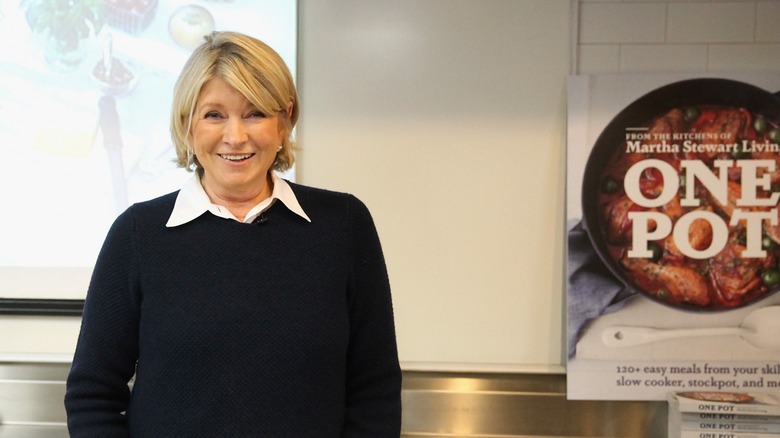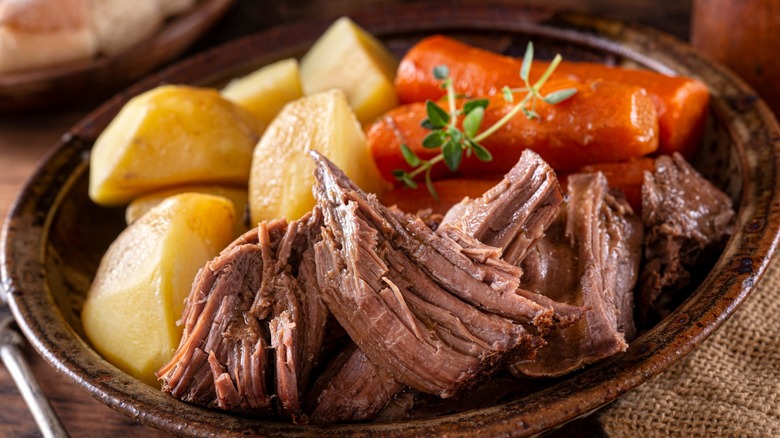Martha Stewart's Tip For Cooking Pot Roast In Less Liquid
Pot roast is an enduring standard in American cooking. Whether you enjoy the homey nostalgia or no-fuss practicality, this meaty melange offers plenty of beefy bang for your buck (especially when you have the perfect cut of meat). If you really want to get the most out of this beloved dish (and you have a little more time for the fuss), Martha Stewart's method for cooking pot roast in less liquid yields an ideally flavorful roast. Her tip — braise it with a bit of sauce.
While you can cook a pot roast in the oven (using dry heat) or in a slow cooker (moist heat), braising falls somewhere in between, offering the best of both worlds. A mix of both dry and wet, braising in effect steam roasts the beef to a beautifully browned, flavorful, and succulently tender finish. The resultant liquid makes for an easy strain-and-serve pan gravy to accompany it.
The culinary goddess demonstrates this time-honored cooking technique on PBS's Martha Stewart's Cooking School. With stovetop braising as her modality of choice, she preps the meat and aromatics (a mirepoix of carrot, celery, and onion) as usual, patting dry, seasoning, and browning the meat for 8 to 10 minutes. Once browned, she removes it from the pan, adding the mirepoix and seasonings and sautéeing them until the onions are translucent. Deglazing the pan with a little water, Stewart adds a tablespoon of flour, mixing and browning before adding her liquid. Now, she's ready to braise.
Embrace the braise
With the braising liquid added to the pan (about 1 ½ cups of water) and aromatics ready, the lifestyle icon lowers the heat to a simmer and adds the pot roast back into the pan to sit upon the mirepoix and cooking liquid, explaining that the liquid should only come up about an inch on the sides of the meat. For even more flavor, Stewart suggests using stock or red wine, though she prefers water and red wine vinegar. Lidding the pan, she notes that when using this cooking technique, you'll need to be vigilant, as with such a small amount of liquid, you'll need to turn the roast more frequently (about every 30 minutes). This ensures even-cooking and that all your liquid hasn't evaporated.
The whole process takes a few hours, at which point Stewart removes the meat, sieves the liquid and aromatics, and pours the resulting liquid (a rich brown gravy) back into the pot. Next, she adds a variety of colored baby potatoes, carrots, and turnip wedges to the gravy, returning the meat to the pot, lid on again for another 20 minutes or so, until the veggies are knife-point soft. With results this tender, flavorful, and delicious, it's no wonder Stewart is enthusiastically in praise of the braise.

